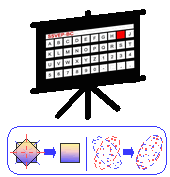Author(s): Bingchuan Liu, Xiaogang Chen, Xiang Li, Yijun Wang, Xiaorong Gao, Shangkai Gao

Steady-state visual evoked potential based brain-computer interface (SSVEP-BCI) has received increasing attention due to high information transfer rate (ITR), zero training, and low BCI illiterate rate. Generally, there are two main lines of research for the development of SSVEP-BCIs. One is the research on encoding and decoding approaches, and the other is the effort in practical aspects, e.g., dry electrodes. Although dry electrode has impressively improved the ease of use of non-invasive BCIs, its relatively low signal-to-noise ratio (SNR) and ITR have long been a major problem in practical applications. To tackle this issue, from the perspective of decoding approach, transfer learning has a relatively good ability in information transfer, and has the potential to improve the performance of the dry-electrode system by wet-electrode auxiliary EEG data with a high SNR. In this way, this work exploits the characteristics of SSVEP data to construct a transfer learning framework, named ALign and Pool for EEG Headset domain Adaptation (ALPHA), for the information transfer between EEG from dry and wet electrode.
In ALPHA, we align the statistics of spatial pattern together with covariance to minimize the discrepancy between source domain and target domain. After this step of domain adaptation, we perform subspace pooling, a step for similarity measure in the feature space of the spatially filtered signals. The effectiveness of ALPHA was validated by an SSVEP-BCI experiment involving 75 subjects, revealing that ALPHA achieved the state-of-the-art performance among the transfer learning approaches and the training-free approach in both transfer directions. When transferring EEG from wet to dry electrode, ALPHA significantly outperformed the fully-calibrated approach and the calibration effort could be lessened. This study opens the door for facilitating dry electrode based SSVEP-BCI via high-fidelity EEG data and transfer learning, and holds promise to expedite the use of dry-electrode systems in real-world applications.

